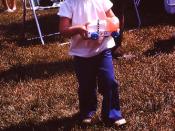Sinclair Lewis defines universal similarity in Main Street through Carol's observation as "the physical expression of the philosophy of dull safety. Nine-tenths of the American towns are so alike that it is the completest boredom to wander from one to another." (p. 239) This reveals itself in the lack of originality in the construction of streets, buildings, in the "neglect of natural advantages." Carol observes, "If Kennicott were snatched from Gopher Prairie and instantly conveyed to a town leagues away, he would not realize it." (p. 240) In Carol's view "Life is comfortable and clean enough here already. And so secure."(p. 241) She says the town needs to be less secure in order to strive for excellence.
In Lewis' Main Street, there are two cultures: urban and rural. The urbanites represent the capitalist class and rural people represent the working class. In Lewis' metaphors one can see evidence of both class struggle between serf and lord and also the contemporary class struggle between working and capitalist classes.
Carol observes that the farm folk treat Kennicott like lord of the manor. The town folk have a certain pecking order, but they are all in one way or another capitalists, and the wealthier they are the more prestige they carry. Their opinions about town life ultimately determine if and when a new school or town hall will be built, who is worth knowing, and who "belongs" in the community. This is particularly evident in the Fern Mullins episode, when Ma Bogart goes from house to house telling her side of the tale to all the powerful people in town. When Carol goes to Sam Clark about it, he agrees that Ma's version is false, but he says that the other board members are more powerful than he, and that they will side...


